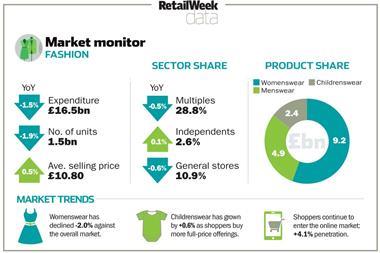SuperGroup’s latest set of results are impressive, bucking the fashion market’s downward trend with profits and sales shooting up.
Like-for-likes grew 11% in the 52 weeks to April 23 while pre-tax underlying profit is expected to be between £72.5m and £74m. This is up from £63m for the previous year.
Even better, unlike some rivals, there was no mention of the weather anywhere in SuperGroup’s announcement.
The figures are notable in a fashion market in which many are struggling. But they are more remarkable when you consider that not so long ago, the Superdry brand owner was among them.
In October 2014 new chief executive Euan Sutherland was forced to issue a profit warning. A few months later it reported a 4% slip in like-for-likes, while profits plunged by nearly a third.
Turnaround
So how has SuperGroup turned it around?
The retailer points to a bigger focus on womenswear and its men’s premium range as two key reasons for its strong performance.
Peel Hunt analyst John Stevenson agrees there has been “significant range improvements and investment in the design team” and adds “while the SuperGroup graphics and imagery remains a key part of the brand, range development and innovation continue to accelerate”.
”Superdry’s transeasonal ranges are more aligned with the manner in which consumers shop than many other retailers”
Nivindya Sharma, Verdict
Analysts are also impressed by SuperGroup’s offer in terms of product that is not tied to one season.
“Superdry’s transeasonal ranges are more aligned with the manner in which consumers shop than many other retailers,” says Verdict analyst Nivindya Sharma.
“Consumers’ shopping habits are changing, and seasonal product drops are increasingly irrelevant when shoppers prefer to buy across seasons.”
Seasonless ranges – clothes which can be worn all year round – have proven to be a success at many fashion retailers, with businesses as diverse as Debenhams and New Look bringing in key pieces to bridge the seasons.
And a selection from Marks & Spencer’s autumn collection arrived in stores this week, rather than landing as part of the traditional seasonal ‘big drop’. M&S focused on “seasonless” pieces, which can be layered to wear at any time of the year.
Athleisure trend
Finally, Superdry has been looking to capitalise on the athleisure trend, with a high-profile range launch last November, fronted by The Wire star Idris Elba.
Tapping into the athleisure trend is a smart move, and one which fits with Superdry’s existing strengths.
The sector has grown 42% in the past seven years and is now worth $270bn (£194bn) globally, according to Morgan Stanley. The bank predicts that it will grow another 30% by 2020.
Sharma argues this range will have “driven spend from existing shoppers while recruiting new ones” and notes shoppers are “increasingly demanding value for money, and incorporating fabric and technology innovation into key product ranges such as sports and activewear will help Superdry provide more value to existing and prospective customers – thereby positioning it well for long-term growth”.
While the fashion market may continue to bring challenges, SuperGroup’s product strategy should help it dodge those fashion doldrums once again.
























No comments yet